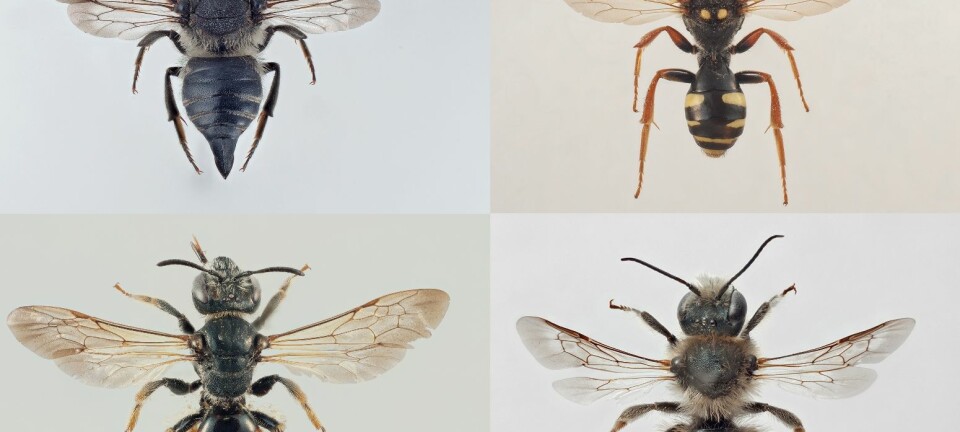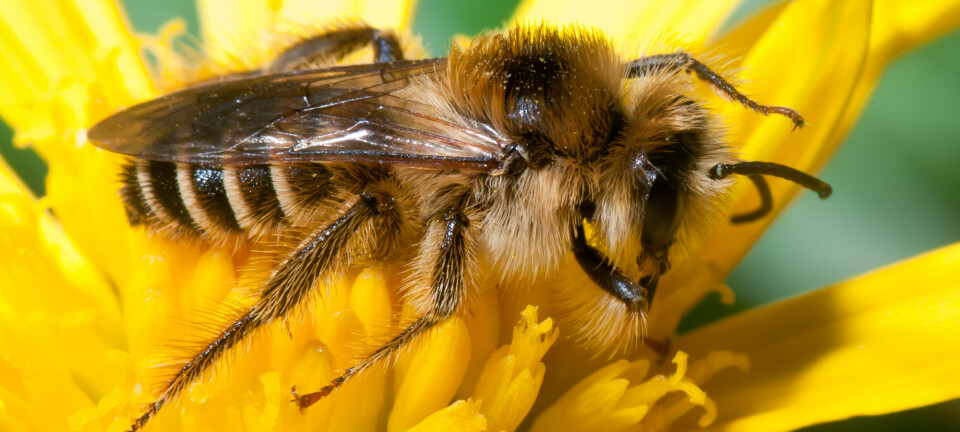An article from Norwegian Biodiversity Information Centre

Lack of knowledge about insect pollination
Understanding exactly how pollinators – particularly bees - and the plants they pollinate are affected by human activities requires extensive knowledge. This knowledge is also important in calculating the value of pollination ecology.
Denne artikkelen er over ti år gammel og kan inneholde utdatert informasjon.
There has been a decline in the species richness and density of pollinators in Norway in recent years. The decline has been rapid, which makes it unlikely that plant reproductive strategies have had time to adapt to the new situation.
This has probably led to reduced seed production, which can affect the long term survival of pollinator-dependent plant species.
The decline is due to habitat loss, climate change, pesticides, introduced species and other environmental changes that threaten the biodiversity of insect pollinators and the plants they collect food from.
The interaction between insects and plants is complex, and it is our understanding of this interaction and how it is affected by changes in species composition that is especially lacking.
Norwegian conditions are of global interest
As in the rest of Europe, insects are the only pollinators in Norway. Norway has 205 wild bee species (including bumblebees) and one species of domesticated bee, the common honey bee (Apis mellifera).
Wild bees and bumblebees are overall the most important pollinators, and together with flies constitute the largest percentage of pollinators. Although flies are generally poorer pollinators than wild bees and bumblebees, they are important in Norway because of their large species numbers and individuals. The species richness of pollinating insects is lower at northern latitudes than in many other countries, which means that Norway can be characterized as being species-poor.
Norway's geography, with its steep valleys and vast mountains, restricts pollinators’ habitats and ability to spread in a completely different way than in most of Europe. Norway's peculiarities can make it difficult to transfer knowledge from other countries in the world to Norwegian conditions.
However, Norway’s relative dearth of pollinators does have an advantage, says Ørjan Totland, a professor at the Norwegian University of Life Sciences (UMB), and the editor of the report.
“It is easier to understand the mechanisms that regulate species-poor communities, which is an advantage when you want to study and understand the interaction between species. Norwegian researchers thus have a good starting point if we want to understand more about this interaction,” he says.
New report shows lack of information
Totland and other Norwegian experts have now begun to address this need by assembling information from earlier research on the complex interactions between insect pollinators and plants in Norway. Their results show that we know something about how plants and bees interact, but perhaps not enough to manage them in the best possible way.
The researchers’ new report, “State of knowledge: Insect pollination in Norway – the importance of the complex interactions between plants and insects” provides for the first time an overall description of what is known and not known, and proposes measures to improve our overall understanding of pollination ecology in Norway.
The Norwegian Biodiversity Information Centre (NBIC) appointed an expert committee on the subject, and subsequently commissioned the report. “We hope this report will help contribute to build our knowledge base in this very important area,” says Ivar Myklebust, NBIC’s director.
One clear conclusion is that there has been little research on pollination ecology in Norway over the past decade, compared to other Scandinavian countries. As a result, the country’s information base is thus both poor and fragmented.
Vulnerable to climate change
Our knowledge about the effects of climate change on individual species is quite good, and it is also likely that climate change will have the greatest impact on populations at the edge of a species' range. These populations are therefore particularly vulnerable to climate change.
Many pollinating insects in Norway occur at the edge of the species distribution, and also love the sun, so the effect of a warmer climate may be cancelled out by more clouds and precipitation.
“However, we still know too little about this, since our knowledge of the effects of climate change on the interaction between plants and pollinators is limited,” says Totland.
Intensive agriculture and landscape fragmentation
A shift to more intensive agriculture, especially since the 1950s, has led to a sharp decline in the area of flower-rich habitats, such as pastures and hay meadows. Semi-natural grassland and their wildflowers are important since they provide access to nectar and pollen to a large number of insect species over a long period during the summer.
Changes in agricultural practices have also led to a sharp reduction in field or meadow edges, where insects can find shelter, food and areas to reproduce. The area around Oslofjorden has seen a reduction of 40 percent in this kind of habitat between 1945-1995. Changes in agricultural practices have also resulted in greater habitat fragmentation, which has also contributed to the loss of 12 bee species from Norway over the past 100 years. There are usually several reasons why habitats are fragmented, but regardless of the cause, habitat fragmentation causes reduced and isolated populations that are at increased risk of inbreeding.
Pollinators provide an important service
Pollination is a type of ecosystem service, or a service that nature provides us. Ecosystem services are of great importance to agriculture worldwide and the economic value of pollination is estimated to be 153 billion euros annually, which represents 9.5 percent of the total value of global agricultural production. About 70 percent of agricultural crops used directly for human consumption are dependent on pollination, mainly from insects.
In the Nordic countries, the quality or yield of the fruit, berries, oil seeds and seed production of clover and other members in the pea family can be reduced if there are fewer pollinating insects. In addition, pollination is important for the production of wild-grown cloudberries, blueberries, cranberries, raspberries and strawberries. It’s likely that the seed production of nearly 80 percent of wild plants that grow in Norway is favoured by insects visiting their flowers.
Although the importance of pollination in ecosystem functioning is also clearly important in Norway, the scientists say their report comes with recommendations to fill the knowledge gaps.
“With the exception of the effect of honey bees on agricultural fruit production, we know very little about the contributions that other insects make to pollination. Our current knowledge is based on assumptions whose quality has not been verified,” Totland says.
Proposed measures and priorities
The report provides a basis for prioritizing monitoring and research efforts. Given the need for a fundamental base of knowledge in pollination ecology, the expert group suggests the following priority areas:
- Map pollinators and the plant species they visit
- Monitor pollinator availability for plant species
- Identify the importance of pollen limitation on seed production and population growth in plant species
- Increase the Norwegian contribution to the international knowledge base on pollination, and strengthen the training of pollination ecologists.

































